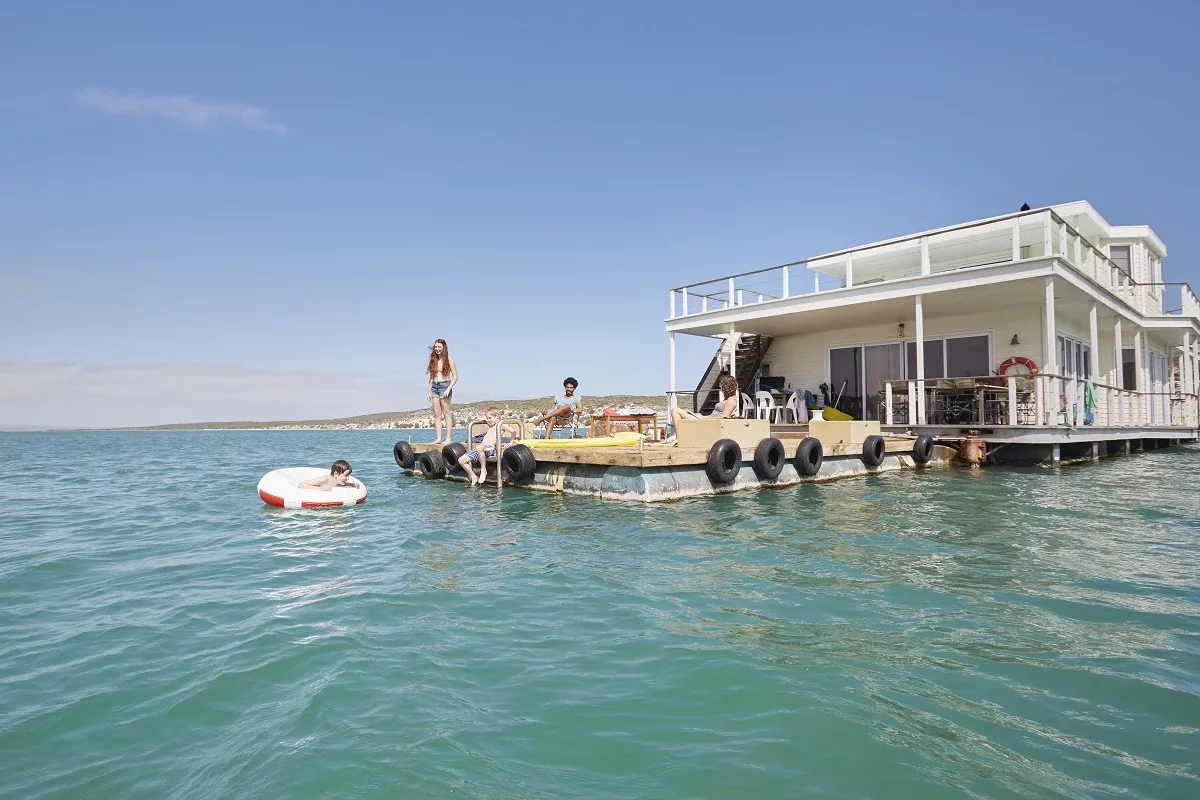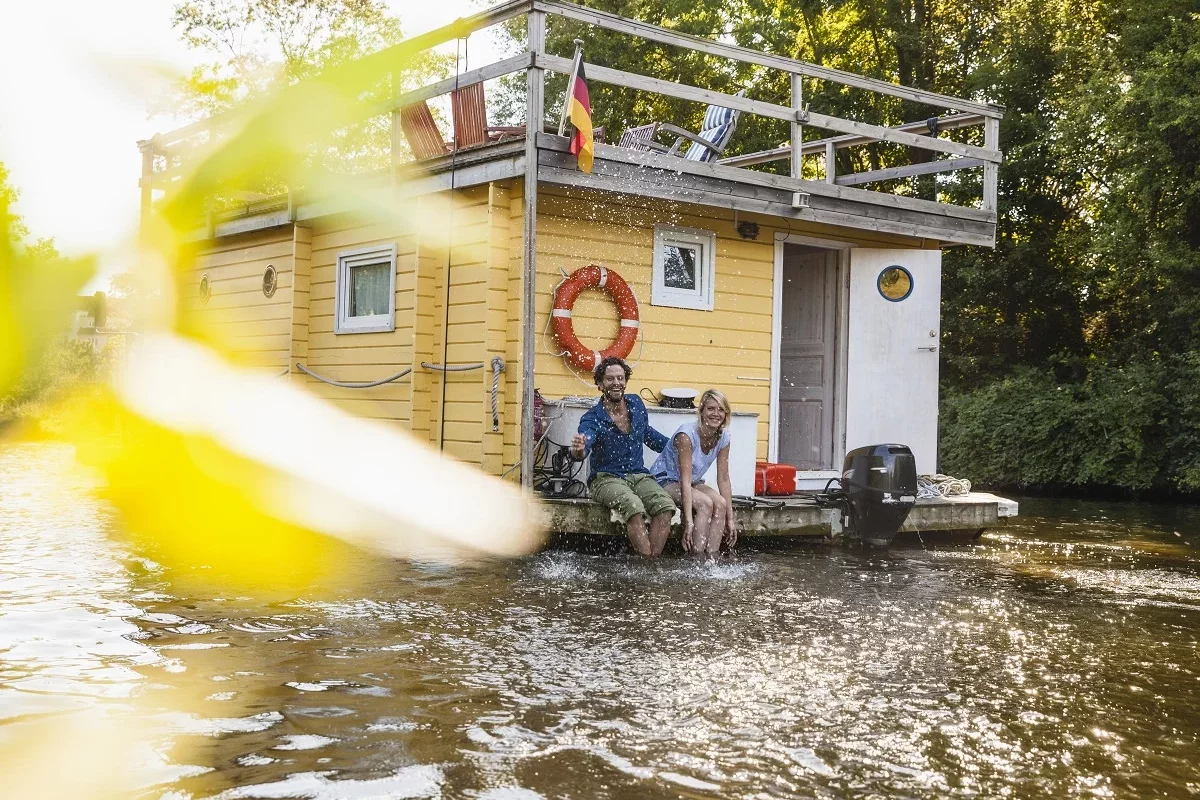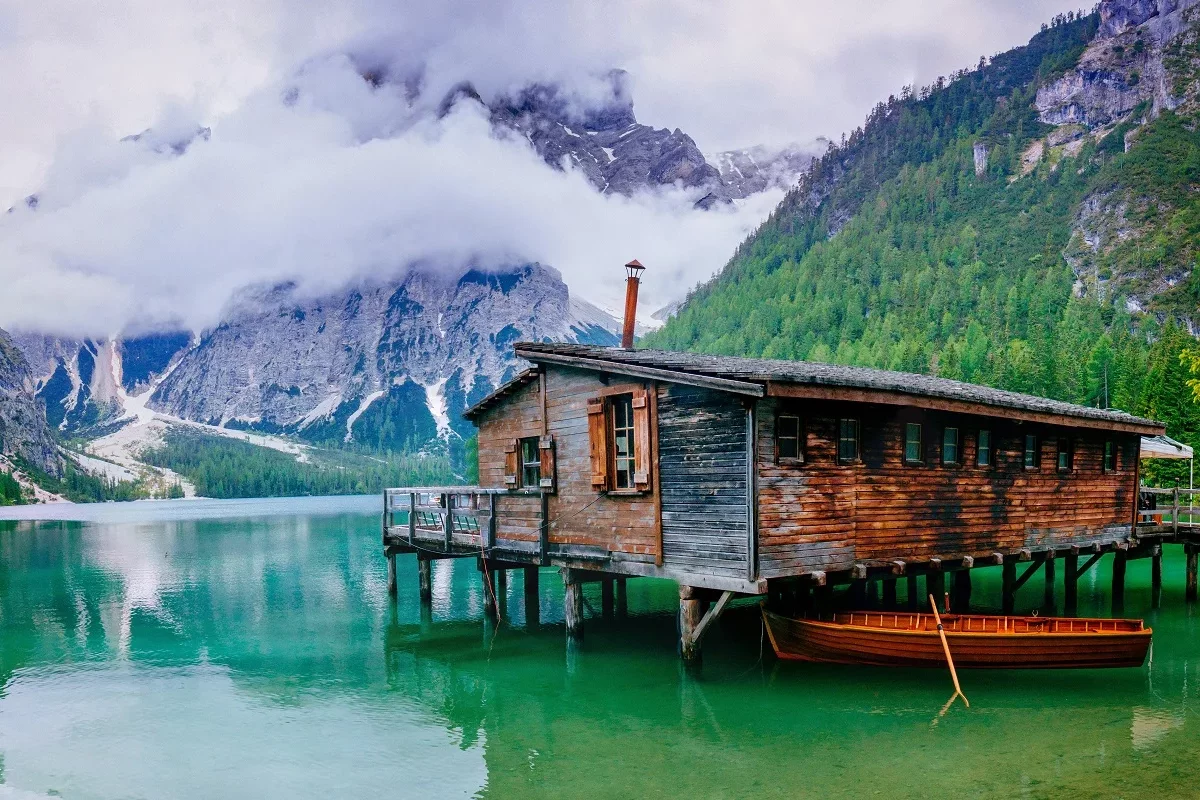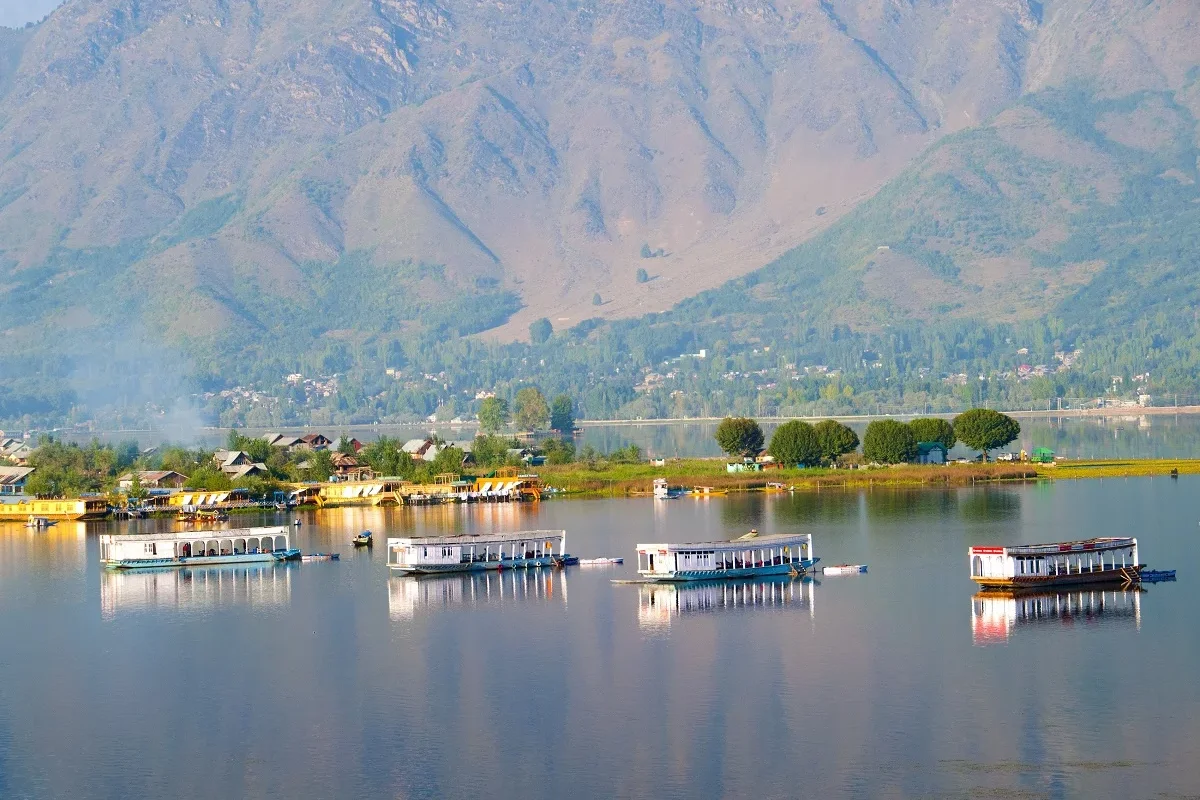What is a houseboat
A houseboat is a vessel or any other floating object designed to be used as a dwelling. A houseboat may navigate in rivers, gulfs, lakes or estuaries. Waves must be no higher than 1.2 metres and wind speed no higher than 15 metres per second. Average run time of a houseboat is from 3 days to 2 weeks.
Houseboat types
There are subtypes of houseboats which do not have an engine as most of the time they are moored, pulled up to the shore and/or anchored near it. Such houseboats are supplied with electricity and water from the «mainland».
As an alternative, there are many houseboats with powerful boat engines. They are usually equipped with an autonomous power supply system and can therefore go on long cruises.
This type of accommodation has gained a lot of popularity, and there are whole settlements with clusters of residential complexes with bridges and walkways between the houseboats, and between these settlements and the shore. These floating accommodation complexes usually have all the amenities:
- water supply,
- sewage,
- telephone connection,
- internet connection,
- electricity.
Construction and nuances of using houseboats
Instead of a foundation, houseboats have a floating pontoon platform, which can be made of wood, reinforced concrete, polyethylene, fibreglass or a combination of these materials.
Options with steel and aluminium hulls are usually used in some countries for so-called floating summerhouses. These materials are only suitable for seasonal use as they need to be pulled out of the water for storage and maintenance during the cold season.
Houseboats with concrete hulls (and in some cases also polyethylene and GRP) do not need to be pulled out of the water in winter, as they are not afraid of being deformed by ice crusts in the water. Therefore, such floating houses can be used all year round. The layout can be single and multihull, usually catamarans and trimarans.
Motorised houses are divided into self-propelled and non-propelled. Engines can be outboard, stationary, diesel or petrol. Stationary engines are equipped with angled columns. Floating houses may also have thrusters on the stern and bow.












